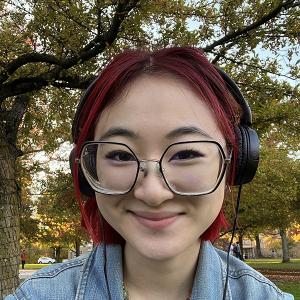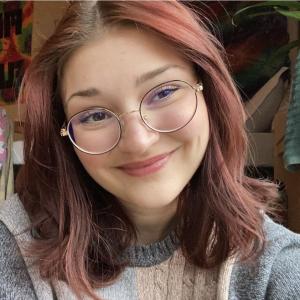Oberlin Blogs
There’s no time like the present
May 22, 2020
Emily Humphreys ’21
I’ve been told by some people I trust that the week of March 8 was only seven days long, but if I didn’t trust those people quite so much, I would swear that it was a monthlong at least. Over the course of that week the idea that we would not be returning to campus after spring break shifted rapidly from a possibility to a probability to a truth. This was the case not only for students, but also for professors.
In the end, we were sent home a week early for an extended spring break. As students spent that time transitioning to alternative living situations, professors took on the mammoth task of figuring out how to cover missed material, adapt to online learning platforms, and support students through the transition. During this already stressful time, many of my professors also took the initiative to incorporate newly relevant topics into their course plans, finding creative ways to teach us about the pandemic that was happening all around us.
Although I am a biology major, I didn’t take any biology courses this semester. I did, however, take a class in the adjacent field of bioorganic chemistry. We spent the semester learning about chemical binding and biological processes, and, in the last week, we focused on drug discovery. Themes we had discussed all semester seemed newly relevant as we learned how binding specificity allows drugs to be effective against their targets with limited toxicity in the human body.
After talking about drug discovery more generally, my professor focused on the search to find drugs that can effectively target COVID-19. We looked at the chemical structure of Chloroquine and Hydroxychloroquine and talked about the mechanism by which they may impact viral binding. We also learned about the drug Remdesivir which may help discourage viral replication. My teacher took us through the steps of drug development from the selection of a candidate molecule to the many phases of clinical trials.
The next day, I heard on the news that scientists ended a clinical trial on Remdesivir early because the emerging results were so promising. Instead of feeling overwhelmed as I tried to piece together the implications of this news, I felt informed for the first time I can remember since the outbreak started.
While bioorganic chemistry gave me a chance to look at the virus from a very technical angle, my class in the rhetoric and composition department approached studying the outbreak from a completely different perspective. The class was called “Writing in the Sciences.” All semester long, we explored the mechanics of scientific communication from formal journal articles to popular science podcasts. We discussed why it's important to communicate science to general audiences and the challenges that come along with it.
As the class watched coronavirus spread across the globe, principles of scientific communication that seemed abstract in February began to feel ever more concrete. Together, we observed firsthand the dangers that come with misunderstanding and oversimplification in scientific discourse. When we reconvened after spring break, we jumped right in to discussing how coronavirus is discussed and writing about how coronavirus is written about.
Before this class, I thought a lot about the content of the media I was consuming, but much less about the media itself. After a semester of careful analysis, though, I have begun to notice rhetorical conventions everywhere I look. For example, one thing we talked about in class is how militaristic language is often used while discussing the pandemic. Words like “fight,” “battle,” and “victory” are scattered across popular discourse. Now that I notice common patterns like this, I’m able to engage with them and think critically about how they shape my understanding of the world.
The last course I want to talk about was a history class, the first one I’ve taken at Oberlin. It focused on the environmental history of China spanning from ancient hydraulic innovations to recent waste-processing policies. As coronavirus impacted China through the early spring, the class encouraged me to look at the spreading disease through an environmental perspective as well as an international one. The COVID-19 virus may be new, but the world’s response to it has been shaped by historical knowledge and cultural perspectives.
Due to the shift to online classes, our midterm was postponed until after spring break. Our professor had originally intended it to be a research project, but he quickly realized that without access to the college’s library this would be impractical. Instead, he decided, we would build our own archive. For the project, we were tasked with writing three short reports on how the environment around us had changed in response to COVID-19.
While I enjoyed writing the reports, it was reading my peers' accounts that really had an impact on me. The archive captured a very specific moment in time when we're all in an incredible state of transition. People wrote about returning home, staying put, wearing masks, going to the grocery store, retreating to online spaces, appreciating nature, worrying about family and friends, seeing normally bustling places empty, and just generally the reality of living in a world that feels not quite as safe and stable as before. Reading these stories and sharing my own helped me feel a little less alone in a time of intentional isolation.
My teacher talked to one of the archivists at Oberlin’s library and encouraged everyone to donate their reports to the college archive in an effort to document what it's like to be a college student in the time of COVID-19. Maybe someday, when this is all over, our writings will be a part of the history of what’s happening right now.
---
On the morning of Saturday, May 16, I read over my essay one last time. After making sure every comma was in place and every citation was properly formatted, I hit submit. Then I sat back and breathed a sigh of relief. I had turned in all of my finals.
Since then, my days have been filled with the quiet stillness of early summer. As a rising senior, I know the hubbub will soon return as I study for grad school entrance exams and start thinking about post-college life in a serious way. In the interim, though, I’m trying to take this time as a moment to rest and reflect.
Only in thinking back on the semester have I come to fully appreciate the myriad of creative ways my professors shifted their course material to incorporate time for learning about COVID-19.
From chemistry to composition, my teachers thoughtfully adapted their syllabi mid-semester to make the classes as engaging and relevant as possible. While learning from home these past few months has been challenging, the invitation my teachers provided to think about the pandemic through so many different lenses has truly helped me make sense of what is going on in my own life and also the world.
Similar Blog Entries

An Ode to Obsession: Some unexpected academic loves I found this semester
November 30, 2024
I’ve made it my mission to not produce a single thing that I don’t care about.

Creative Writing Workshops
November 21, 2024
My first adventure into Oberlin's creative writing department.
